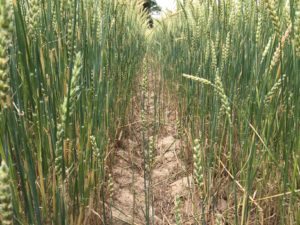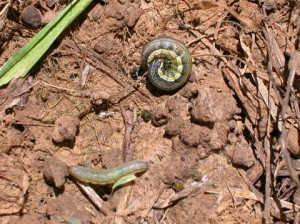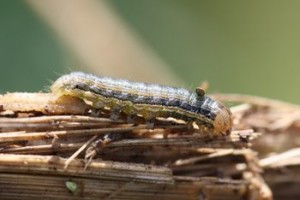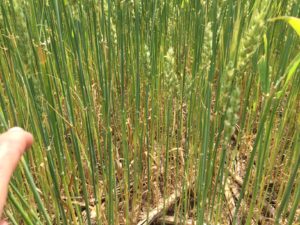Each year, about this time, I end up writing essentially the same article. There have been a couple of reports of armyworms in wheat. Nothing crazy but much of the wheat is still in the milk stage and would be susceptible to excessive defoliation. Occasionally, armyworms may even cut the heads, typically when populations are high. Yield loss is most likely if defoliation occurs during the milk stages, with little yield loss likely during the dough stage even if severe defoliation occurs. See pictures below.
For true armyworm, use a treatment threshold of 6-8 larvae per square foot if wheat is in the milk stage. Once past the milk stage, wheat can tolerate higher populations and treatment is not usually recommended unless larvae are cutting wheat heads. Remember that larvae often fall to the ground when disturbed and hide under debris during the day, so you’ll need to look close. Synthetic pyrethroids at mid rates such Baythroid XL, Declare, Karate/Warrior, and Mustang Max are typically used with good effect.
True armyworms sometimes pose a problem where they are feeding in fields with weedy grass hosts (or cover crops that contain wheat, oats, rye, and/or barely). If they are still present when the crop emerges, they occasionally may feed on plants and reduce stands. An early burndown will prevent this because larvae will cycle-out, starve or leave the field if no hosts remain (although you sometime may see injury from larvae moving into fields from grassy ditch banks or adjacent wheat). If armyworms are persisting in fields at the time of planting, you might consider applying an insecticide when you make any pre-emergence herbicide applications.





